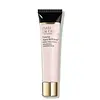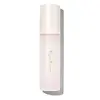What's inside
What's inside
 Key Ingredients
Key Ingredients

 Benefits
Benefits

 Concerns
Concerns

 Ingredients Side-by-side
Ingredients Side-by-side

Water
Skin ConditioningMethyl Trimethicone
Skin ConditioningButylene Glycol
HumectantGlycerin
HumectantGlycereth-26
HumectantPropanediol
SolventDimethicone
EmollientSodium Hyaluronate
HumectantTocopheryl Acetate
AntioxidantSqualane
EmollientHelianthus Annuus Seed Extract
Skin ConditioningPropylene Glycol Dicaprate
EmollientCucumis Sativus Fruit Extract
EmollientSimmondsia Chinensis Seed Oil
EmollientHaberlea Rhodopensis Leaf Extract
Skin ConditioningBeta Vulgaris Root Extract
Skin ConditioningPalmitoyl Tripeptide-1
Skin ConditioningArtemia Extract
Skin ConditioningNymphaea Alba Root Extract
Skin ConditioningHordeum Vulgare Extract
EmollientPolygala Senega Root Extract
RefreshingBeta Vulgaris Extract
Skin ProtectingCaffeine
Skin ConditioningPhenyl Trimethicone
Skin ConditioningAscorbyl Glucoside
AntioxidantBetaine
HumectantTrehalose
HumectantEthylhexyl Palmitate
EmollientCetyl PEG/PPG-10/1 Dimethicone
EmulsifyingLauryl PEG-9 Polydimethylsiloxyethyl Dimethicone
Skin ConditioningCholesterol
EmollientMethyldihydrojasmonate
MaskingMethicone
EmollientCaprylyl Glycol
EmollientTriticum Vulgare Germ Extract
Skin ConditioningYeast Extract
Skin ConditioningTribehenin
EmollientGlucose
HumectantSucrose
HumectantTin Oxide
AbrasiveDimethicone/PEG-10/15 Crosspolymer
Dipropylene Glycol
HumectantPEG-75
HumectantSilica Dimethyl Silylate
EmollientSorbitan Isostearate
EmulsifyingPolysilicone-11
Synthetic Fluorphlogopite
Xanthan Gum
EmulsifyingPolyquaternium-51
Skin ConditioningNylon-12
Citric Acid
BufferingSodium Chloride
MaskingDisodium EDTA
Sodium Citrate
BufferingChlorphenesin
AntimicrobialPotassium Sorbate
PreservativePhenoxyethanol
PreservativeMica
Cosmetic ColorantCI 77891
Cosmetic ColorantCI 77491
Cosmetic ColorantCI 77163
Cosmetic ColorantWater, Methyl Trimethicone, Butylene Glycol, Glycerin, Glycereth-26, Propanediol, Dimethicone, Sodium Hyaluronate, Tocopheryl Acetate, Squalane, Helianthus Annuus Seed Extract, Propylene Glycol Dicaprate, Cucumis Sativus Fruit Extract, Simmondsia Chinensis Seed Oil, Haberlea Rhodopensis Leaf Extract, Beta Vulgaris Root Extract, Palmitoyl Tripeptide-1, Artemia Extract, Nymphaea Alba Root Extract, Hordeum Vulgare Extract, Polygala Senega Root Extract, Beta Vulgaris Extract, Caffeine, Phenyl Trimethicone, Ascorbyl Glucoside, Betaine, Trehalose, Ethylhexyl Palmitate, Cetyl PEG/PPG-10/1 Dimethicone, Lauryl PEG-9 Polydimethylsiloxyethyl Dimethicone, Cholesterol, Methyldihydrojasmonate, Methicone, Caprylyl Glycol, Triticum Vulgare Germ Extract, Yeast Extract, Tribehenin, Glucose, Sucrose, Tin Oxide, Dimethicone/PEG-10/15 Crosspolymer, Dipropylene Glycol, PEG-75, Silica Dimethyl Silylate, Sorbitan Isostearate, Polysilicone-11, Synthetic Fluorphlogopite, Xanthan Gum, Polyquaternium-51, Nylon-12, Citric Acid, Sodium Chloride, Disodium EDTA, Sodium Citrate, Chlorphenesin, Potassium Sorbate, Phenoxyethanol, Mica, CI 77891, CI 77491, CI 77163
Water
Skin ConditioningDimethicone
EmollientMethyl Trimethicone
Skin ConditioningDipropylene Glycol
HumectantGlycerin
HumectantButylene Glycol
HumectantVinyl Dimethicone/Methicone Silsesquioxane Crosspolymer
Dimethicone/Vinyl Dimethicone Crosspolymer
Skin ConditioningCetyl PEG/PPG-10/1 Dimethicone
EmulsifyingSodium Chloride
MaskingDimethicone/PEG-10/15 Crosspolymer
Silica
AbrasivePropanediol
SolventSodium Benzoate
MaskingPotassium Sorbate
PreservativeTocopheryl Acetate
AntioxidantEclipta Prostrata Extract
Skin ConditioningGlyceryl Acrylate/Acrylic Acid Copolymer
HumectantParfum
MaskingCamellia Sinensis Leaf Extract
AntimicrobialSodium Citrate
BufferingMelia Azadirachta Leaf Extract
Skin ConditioningHyaluronic Acid
HumectantHydrolyzed Hyaluronic Acid
HumectantSodium Hyaluronate
HumectantGardenia Florida Fruit Extract
Skin ConditioningNelumbo Nucifera Flower Extract
Skin ConditioningNymphaea Odorata Root Extract
RefreshingMoringa Oleifera Seed Oil
EmollientTocopherol
AntioxidantWater, Dimethicone, Methyl Trimethicone, Dipropylene Glycol, Glycerin, Butylene Glycol, Vinyl Dimethicone/Methicone Silsesquioxane Crosspolymer, Dimethicone/Vinyl Dimethicone Crosspolymer, Cetyl PEG/PPG-10/1 Dimethicone, Sodium Chloride, Dimethicone/PEG-10/15 Crosspolymer, Silica, Propanediol, Sodium Benzoate, Potassium Sorbate, Tocopheryl Acetate, Eclipta Prostrata Extract, Glyceryl Acrylate/Acrylic Acid Copolymer, Parfum, Camellia Sinensis Leaf Extract, Sodium Citrate, Melia Azadirachta Leaf Extract, Hyaluronic Acid, Hydrolyzed Hyaluronic Acid, Sodium Hyaluronate, Gardenia Florida Fruit Extract, Nelumbo Nucifera Flower Extract, Nymphaea Odorata Root Extract, Moringa Oleifera Seed Oil, Tocopherol
 Reviews
Reviews

Ingredients Explained
These ingredients are found in both products.
Ingredients higher up in an ingredient list are typically present in a larger amount.
Butylene Glycol (or BG) is used within cosmetic products for a few different reasons:
Overall, Butylene Glycol is a safe and well-rounded ingredient that works well with other ingredients.
Though this ingredient works well with most skin types, some people with sensitive skin may experience a reaction such as allergic rashes, closed comedones, or itchiness.
Learn more about Butylene GlycolThis ingredient is a high molecular weight silicone. It has emulsifying and skin conditioning properties.
Dimethicone is a type of synthetic silicone created from natural materials such as quartz.
What it does:
Dimethicone comes in different viscosities:
Depending on the viscosity, dimethicone has different properties.
Ingredients lists don't always show which type is used, so we recommend reaching out to the brand if you have questions about the viscosity.
This ingredient is unlikely to cause irritation because it does not get absorbed into skin. However, people with silicone allergies should be careful about using this ingredient.
Note: Dimethicone may contribute to pilling. This is because it is not oil or water soluble, so pilling may occur when layered with products. When mixed with heavy oils in a formula, the outcome is also quite greasy.
Learn more about DimethiconeDimethicone/PEG-10/15 Crosspolymer is a type of silicone.
Dipropylene Glycol is a synthetically created humectant, stabilizer, and solvent.
This ingredient helps:
Dipropylene glycol is technically an alcohol, but it belongs to the glycol family (often considered part of the ‘good’ alcohols). This means it is hydrating and gentle on skin unlike drying solvent alcohols like denatured alcohol.
As a masking agent, Dipropylene Glycol can be used to cover the smell of other ingredients. However, it does not have a scent.
Studies show Dipropylene Glycol is considered safe to use in skincare.
Learn more about Dipropylene GlycolGlycerin is already naturally found in your skin. It helps moisturize and protect your skin.
A study from 2016 found glycerin to be more effective as a humectant than AHAs and hyaluronic acid.
As a humectant, it helps the skin stay hydrated by pulling moisture to your skin. The low molecular weight of glycerin allows it to pull moisture into the deeper layers of your skin.
Hydrated skin improves your skin barrier; Your skin barrier helps protect against irritants and bacteria.
Glycerin has also been found to have antimicrobial and antiviral properties. Due to these properties, glycerin is often used in wound and burn treatments.
In cosmetics, glycerin is usually derived from plants such as soybean or palm. However, it can also be sourced from animals, such as tallow or animal fat.
This ingredient is organic, colorless, odorless, and non-toxic.
Glycerin is the name for this ingredient in American English. British English uses Glycerol/Glycerine.
Learn more about GlycerinMethyl Trimethicone is a type of silicone. It is a solvent and emulsifier.
Solvents are used to keep ingredients together in a product. They can help dissolve ingredients to stable bases or help evenly distribute ingredients throughout the product.
Emulsifiers help stabilize a product. It does this by preventing certain ingredients from separating.
Methyl Trimethicone does not get absorbed into the skin.
Learn more about Methyl TrimethiconePotassium Sorbate is a preservative used to prevent yeast and mold in products. It is commonly found in both cosmetic and food products.
This ingredient comes from potassium salt derived from sorbic acid. Sorbic acid is a natural antibiotic and effective against fungus.
Both potassium sorbate and sorbic acid can be found in baked goods, cheeses, dried meats, dried fruit, ice cream, pickles, wine, yogurt, and more.
You'll often find this ingredient used with other preservatives.
Learn more about Potassium SorbatePropanediol is an all-star ingredient. It softens, hydrates, and smooths the skin.
It’s often used to:
Propanediol is not likely to cause sensitivity and considered safe to use. It is derived from corn or petroleum with a clear color and no scent.
Learn more about PropanediolChances are, you eat sodium chloride every day. Sodium Chloride is also known as table salt.
This ingredient has many purposes in skincare: thickener, emulsifier, and exfoliator.
You'll most likely find this ingredient in cleansers where it is used to create a gel-like texture. As an emulsifier, it also prevents ingredients from separating.
There is much debate on whether this ingredient is comedogenic. The short answer - comedogenic ratings don't tell the whole story. Learn more about comegodenic ratings here.
The concensus about this ingredient causing acne seems to be divided. Research is needed to understand if this ingredient does cause acne.
Scrubs may use salt as the primary exfoliating ingredient.
Learn more about Sodium ChlorideSodium Citrate is the sodium salts of citric acid. In skincare, it is used to alter pH levels and acts as a preservative.
Its main functions are to maintain the pH of a product and neutralize metal ions.
The acidity of our skin is maintained by our glands and skin biome; normal pH level of skin is slightly acidic (~4.75-5.5).
Being slightly acidic allows our skin to create an "acid mantle". This acid mantle is a thin barrier that protects our skin from bacteria and contaminants.
Learn more about Sodium CitrateSodium Hyaluronate is hyaluronic acid's salt form. It is commonly derived from the sodium salt of hyaluronic acid.
Like hyaluronic acid, it is great at holding water and acts as a humectant. This makes it a great skin hydrating ingredient.
Sodium Hyaluronate is naturally occurring in our bodies and is mostly found in eye fluid and joints.
These are some other common types of Hyaluronic Acid:
Learn more about Sodium HyaluronateTocopheryl Acetate is AKA Vitamin E. It is an antioxidant and protects your skin from free radicals. Free radicals damage the skin by breaking down collagen.
One study found using Tocopheryl Acetate with Vitamin C decreased the number of sunburned cells.
Tocopheryl Acetate is commonly found in both skincare and dietary supplements.
Learn more about Tocopheryl AcetateWater. It's the most common cosmetic ingredient of all. You'll usually see it at the top of ingredient lists, meaning that it makes up the largest part of the product.
So why is it so popular? Water most often acts as a solvent - this means that it helps dissolve other ingredients into the formulation.
You'll also recognize water as that liquid we all need to stay alive. If you see this, drink a glass of water. Stay hydrated!
Learn more about Water